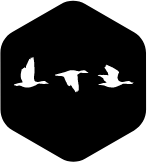Luontovideon kuvaaminen käsivaralta
Oheinen video on kuvattu käsivaralta Canon RF 100-500 objektiivilla. Miksi kuvaan lintuvideoita niin paljon käsivaralta? Tähän on useita syitä.
1. Olen aika malttamaton ja haluan saada valmista materiaalia heti. Tällaiset pähkinähakin tyyppiset linnut liikkuvat paljon. Ne liikkuvat maassa, kohta nousevat puuhun, sitten lentävät paikasta toiseen. Jos kuvaisin jalustan kanssa, joutuisin jatkuvasti muuttamaan sen korkeutta ja olisin koko ajan myöhässä tilanteista. Saisin ehkä jalustan kanssa parempaa jälkeä, mutta vähemmän vaihtoehtoja.
2. Monesti tilanteet ovat nopeita. Lintu löytyy, sitten se on hetken paikalla ja sitten katoaa. Jos saan liikuteltua kuvauskalustoa nopeasti, ehdin tilanteisiin ja zoomin avulla voi kuvata nopeasti erilaisia rajauksia. Tässä tapauksessa minulla oli kovin vähän aikaa, eikä minulla ollut mahdollisuutta palata paikalle myöhemmin.
3. Canon R5 ibis ja objektiivin vakaaja tuottavat yhdessä hyvin vakaata kuvaa. Kuva saa ihan hyvin täristä hieman. Kaiken ei tarvitse olla täydellistä.
Canon RF 100-500 ei ole mikään täydellinen objektiivi, mutta usein hyvä kompromissi. Huonojakin puolia on. Nyt syksyllä, kun päivät ovat pimeämpiä, joudun turhan usein ruuvaamaan Variable ND -filtterin irti, koska objektiivin valovoima ei ole kovin hyvä. Minulla onkin taskussa rasia jonne saan sujautettua sen helposti. Silti vaihtuva aukko ärsyttää hieman. Toistaiseksi ei ole tarjolla järkevähintaista RF-zoomia, jossa olisi kiinteä valovoima.
The video above was shot handheld with a Canon RF 100-500 lens. Why do I shoot so many bird videos handheld? There are several reasons.
1. I’m quite impatient and want to get the footage right away. These nutcracker type birds move around a lot. They move around on the ground, soon climb a tree, then fly from place to place. If I were shooting with a tripod, I would have to constantly change its height and would be constantly late for situations. I might get a better shot with a tripod, but I’d have fewer options.
2. Often situations are quick. The bird is found, then it’s there for a moment, then it disappears. If I can move my gear quickly, I can get to the situation and with the zoom I can shoot different cropping quickly. In this case, I had very little time and no chance to return to the scene later.
3. The Canon R5 ibis and the lens’ stabilizer work together to produce a very stable image. It’s fine for the image to shake a little. Not everything has to be perfect.
The Canon RF 100-500 is not a perfect lens, but often a good compromise. It has its drawbacks. Now in autumn, when the days are darker, I find myself unscrewing the Variable ND filter too often because the lens doesn’t have very good light gathering power. I have a box in my pocket where I can easily slip it in. Still, the variable aperture is a bit annoying. So far, there is no reasonably priced RF zoom with fixed aperture available.
